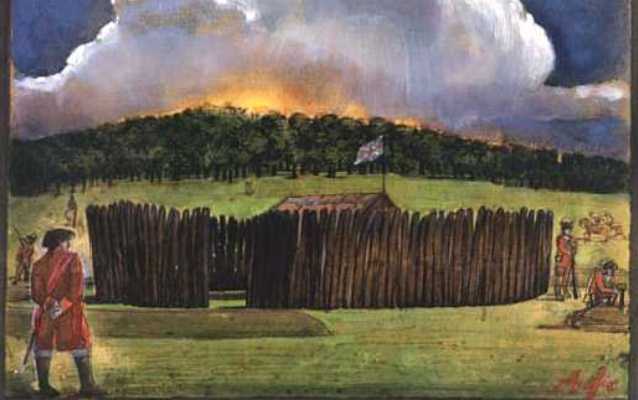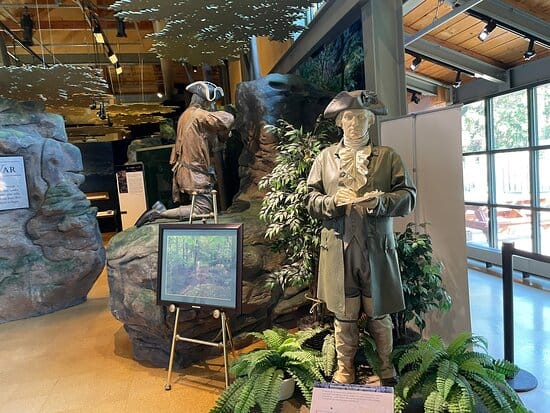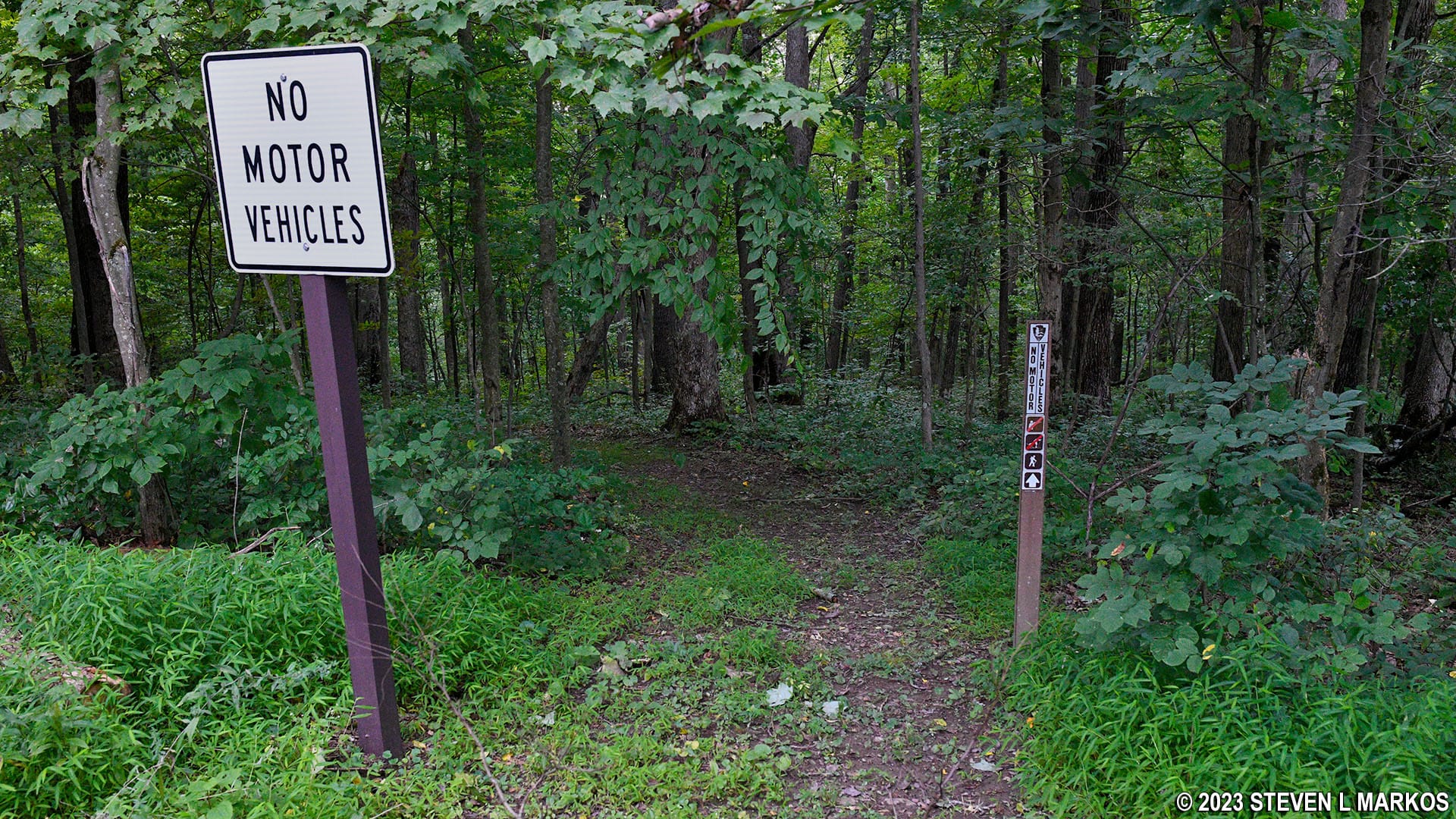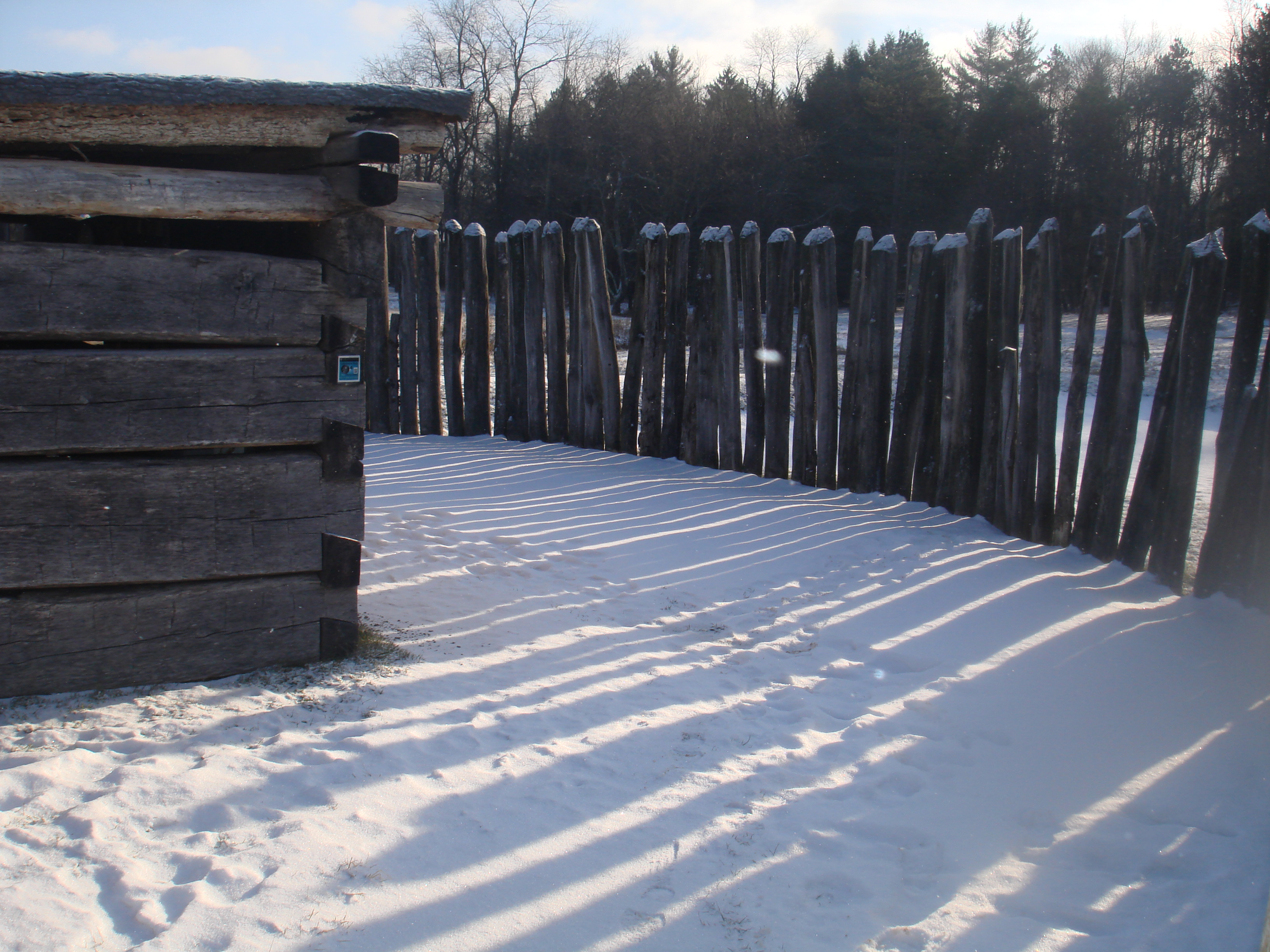
Fort Necessity National Battlefield
Trail Map
Interactive map showing the trail route for Fort Necessity National Battlefield. The map displays topographic information and trail markers.
Elevation Profile
Elevation data not available for this trail.
Chart showing elevation changes along the trail distance. Hover or focus on the chart to see specific elevation values at each point.

Fort Necessity National Battlefield is located in Farmington, Pennsylvania, located in the Allegheny Mountains of southwestern Pennsylvania, USA. It was established as a National Battlefield Site on July 3, 1931. The Battle of Fort Necessity took place on July 3, 1754, during the French and Indian War.
Location:
Mailing Address:
1 Washington Parkway
Farmington, PA 15437
Phone:
(724) 329-5805
Fees: None
The grounds and trails at Fort Necessity are open from sunrise to sunset
History of the Site:
The Battle of Fort Necessity was an early battle of the French and Indian War. The French and Indian War was a conflict between British and French forces, along with Native American allies, for control of North America.
The battle was between the British colonial troops led by George Washington and the French troops which were assisted by the Native Americans.

Fort Necessity was a hastily constructed stockade built by Washington and his troops in the Great Meadows region. It is now southwestern Pennsylvania. The fort was poorly constructed, defenses inadequate, and a rainstorm that hindered the British position which led to failure.

After a day of fighting, Washington's forces were forced to surrender to the French. It was Washington's first major military engagement. This battle influenced his career in the American Revolution. Although he surrendered, Washington was allowed to withdraw his troops with honor.
The Braddock's March and the Battle of Fort Necessity are significant events related to George Washington's early military career and the French and Indian War.




Fort Necessity (1754) was a precursor to Braddock's March (1755) and the broader conflict that shaped George Washington’s early military career.
Here are some key points regarding Braddock's involvement and its connection to Fort Necessity:
Braddock's expedition occurred in 1755 — a year after the Battle of Fort Necessity (1754). The British sent General Edward Braddock to North America to reinforce British colonial efforts in the French and Indian War. Braddock's mission was to capture the French Fort Duquesne (modern-day Pittsburgh), a key French stronghold in the Ohio River Valley.

At this time, George Washington was a young officer, and he was involved in Braddock's campaign as a military aide and guide due to his experience from his earlier involvement in the Fort Necessity battle.
Braddock’s army began its journey from Virginia to the French-held Fort Duquesne. Despite the previous conflict at Fort Necessity, Braddock, a seasoned British officer, underestimated the challenges of the wilderness and the threat posed by French and Native American forces.
Braddock's army passed near Fort Necessity, which was a critical location in understanding the geography of the region. Washington, who had firsthand knowledge of the area after his experience at Fort Necessity, acted as a guide for Braddock's troops.
Braddock's forces were ambushed by French forces and Native American allies near the Monongahela River, not far from Fort Duquesne on July 9, 1755. The ambush resulted in a disastrous defeat for Braddock’s army.

During the battle, Washington displayed leadership and bravery, helping to organize the retreat and saving many lives. He famously had two horses shot out from under him and was nearly killed in the engagement. His actions helped to cement his reputation as a capable military leader.

The Battle of Fort Necessity (1754) and Braddock’s subsequent campaign in 1755 were key events that highlighted the early stages of conflict between the British and the French in North America.
The failure of Braddock's expedition and the earlier surrender at Fort Necessity shaped Washington’s military and leadership skills. These experiences laid the groundwork for his future leadership during the American Revolution.
While Braddock’s defeat occurred after the events at Fort Necessity, both events were crucial in shaping the military environment in the Ohio River Valley and influencing the decisions of both the British and French powers.
Fort Necessity National Battlefield Today:
The battlefield today is part of the National Park Service and includes:
- A visitor center with exhibits about the battle and the broader conflict.

.jpg)
.jpg)
.jpg)
.jpg)

- A reconstructed Fort Necessity, which is based on historical records of the original structure.
- A series of trails that explore the battlefield and surrounding areas, including the site of Washington's early military experience.
Hiking Trails:
Fort Necessity offers a variety of hiking trails to explore the natural surroundings and learn more about the park's history.



The Fort Necessity trail system winds through mixed deciduous forest and meadows.
When Washington and his men passed through this area the trees were large and well-spaced. The forest has been cleared several times to produce charcoal for iron furnaces and for farming.
In places, the trails run past stands of pines. These were planted by the men of the Civilian Conservation Corps camp in the mid 1930's.
A portion of the trail follows the Braddock Road Trace. This is the remnant of the road built by Washington in 1754 and improved by General Braddock's army on their way to Fort Duquesne the next year. This road became one of the major routes of transportation from the east before the completion of the National Road to Wheeling, Virginia in 1818.
Hiking is allowed in all seasons. Some areas of the trails remain wet for a significant period following rain. In the winter months, there may be a significant snow on the trails. The paved trail to from the Visitor Center to Fort and Great Meadows is the only trail that is cleared. Be prepared with proper clothing and footwear.
The Jumonville Glen trail is closed from November through April.
Trails begin from Fort Necessity, the Picnic Area, and Jumonville Glen. Five miles of hiking trails lead through forest and meadows around Fort Necessity. There is also a loop trail at Jumonville Glen and a short walking path at Braddock's Grave.

Trail maps are available at the Visitor Center.
.jpg)
15 minutes – Fort Necessity:
Walk the paved trail from the Visitor Center to Fort Necessity and return.
30 minutes – Braddock Road/French Camp:
Leave the Great Meadows on the Forest Trail, turning right into the woods just before the bridge to the fort. The trail follows Indian Run Creek to the Braddock Road Trace. Follow the Braddock Road to the left 200 ft. Turn left again. This trail returns to the Great Meadows through the French Camp, making a small loop.
45 minutes – Indian Run Loop:
Continue along the Braddock Road Trace another 650 ft., crossing the paved road and the Forest Trail turns to the right. In a short distance the Indian Run Trail bears right and returns to the Braddock Road.
90 minutes – Forest/Meadow Loop:
The Forest Trail continues to the traffic circle at the top of the hill. The Meadow Trail continues through open meadows to your right and passes a peaceful spot where you can stop and enjoy the surrounding landscape with Chestnut Ridge to the west. Just beyond this point, the Meadow Trail splits into the Outer Meadow Trail and the Inner Meadow Trail. The Inner Meadow Trail leads to the hill above Fort Necessity where you can stop to gaze at the setting before returning to the fort area. The Outer Meadow Trail passes through open fields along the park boundary and returns to the fort area.
Longer hikes:
Add the Picnic Area Loop to your Forest/Meadow Loop hike. From the traffic circle, the Picnic Area Spur goes down over the hill and connects to the Picnic Area.
The Great Meadows was where George Washington and his troops fought a large French and Indian force on July 3, 1754. The area near the benches where the Forest Trail leaves the meadow is believed to be where the French and Indians used the forest for cover while directing their most effective fire on Washington's forces.
Park Facilities and Visitor Experience:
The visitor center has exhibits about the French and Indian War, the role of George Washington, and the Native American presence in the area. There are also film presentations that explain the battle and its historical context.
 NPS Photo The Fort Necessity National Battlefield Park Store is located in the Interpretive and Education Center. It is operated by America's National Parks, a non-profit tax exempt organization recognized by the U.S. Congress to aid the National Park Service in their mission of education and service. |
A reconstructed version of the original Fort Necessity is located within the park, offering an opportunity for visitors to learn about the fort's design and its strategic importance.


The National Park Service offers seasonal programs, including ranger-led walks and educational talks on the history of the site.
.jpg)
Note About Pets:
All dogs must remain on a leash (no longer than 6 feet) and all pets must be under control at all times. Pet owners are required to clean up after their pets and prevent them from harming park plants and wildlife.
Pets are not allowed inside the visitor center. If you visit during the summer months, please do not leave your pet in your parked vehicle. Even with the windows rolled down slightly, temperatures inside a locked car can climb to unsafe levels!
Conclusion:
Fort Necessity National Battlefield offers a mix of historical significance and outdoor recreation. Visitors can walk the battlefield, explore the reconstructed fort, and hike through scenic trails that offer both natural beauty and a deeper understanding of the area's pivotal role in early American history. Whether you're interested in the history of the French and Indian War or just looking to explore the park’s trails, Fort Necessity provides an enriching experience. You won't be disappointed.
